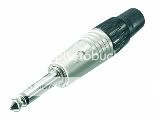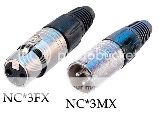Dionysus
Well-Known Member
Yet another reference article I figure would be handy for new sound users. I was also thinking about making one like this for lighting, but there are not as many connectors for lighting... For the most part, lol.
There are many different types of cables and connectors, and one is not just like the other. They have their best uses, and there are a near infinite number of different adaptors and other methods of conversion.
There are DIs, adaptors, transformers, etc ad infinitum.
First I will mention there is a difference between balanced and unbalanced, not to be confused with the difference between Shielded and Un-Shielded. Cables come with different numbers of conductors, different types of shields, different coatings (sheathings), different measures for resistance (or impedance), capacitance, different gauges, and more. Just because one cable looks like another, or even has the same connectors on the ends, does not make it the same.
Cables can be rated for different things, have different advantages and disadvantages. However MOST of this becomes null and void for the most-part as far as most end-users of audio gear are concerned.
UNBALANCED Connector types
1/4" Phono Connector
 A common connector often called a "quarter inch". This connector is used for anything from plugging into a guitar's pickup, to plugging an amplified signal into your loudspeakers...
A common connector often called a "quarter inch". This connector is used for anything from plugging into a guitar's pickup, to plugging an amplified signal into your loudspeakers...
SPEAKON (r) Connector
Speakon Connectors are used to connect the speakers to the amplifier, and often the loop on the speaker to the next speaker. They come in 2 varieties, 2 pole (1 Channel) and 4 pole (2 Channel). A version of a Speakon, called a Powercon, is used often for mains power connection, however these do not mate with speakons. A 2 pole will connect to a 4 pole and vice versa, but only pins 1 and 2 will connect.
BALANCED Connector types
XLR (sometimes called a "microphone jack")
 The XLR connector is one of the most widely used, most trusted connectors in the world of audio. It's name comes from the first company to produce them Cannon who started with the X designation for the series the added the L for "latching" (the ability that the demonstrate for locking together) and then R for Rubber Seal (keeps it water resistant). Many people us XLR as a mnemonic to remember the pin-out (eXternal, Line, Return). The 3-pin XLR connector is a standard for audio, while the 4 and 5 pin XLR are standards for lighting data communications.
The XLR connector is one of the most widely used, most trusted connectors in the world of audio. It's name comes from the first company to produce them Cannon who started with the X designation for the series the added the L for "latching" (the ability that the demonstrate for locking together) and then R for Rubber Seal (keeps it water resistant). Many people us XLR as a mnemonic to remember the pin-out (eXternal, Line, Return). The 3-pin XLR connector is a standard for audio, while the 4 and 5 pin XLR are standards for lighting data communications.
There are many different types of cables and connectors, and one is not just like the other. They have their best uses, and there are a near infinite number of different adaptors and other methods of conversion.
There are DIs, adaptors, transformers, etc ad infinitum.
First I will mention there is a difference between balanced and unbalanced, not to be confused with the difference between Shielded and Un-Shielded. Cables come with different numbers of conductors, different types of shields, different coatings (sheathings), different measures for resistance (or impedance), capacitance, different gauges, and more. Just because one cable looks like another, or even has the same connectors on the ends, does not make it the same.
Cables can be rated for different things, have different advantages and disadvantages. However MOST of this becomes null and void for the most-part as far as most end-users of audio gear are concerned.
UNBALANCED Connector types
1/4" Phono Connector

SPEAKON (r) Connector
Speakon Connectors are used to connect the speakers to the amplifier, and often the loop on the speaker to the next speaker. They come in 2 varieties, 2 pole (1 Channel) and 4 pole (2 Channel). A version of a Speakon, called a Powercon, is used often for mains power connection, however these do not mate with speakons. A 2 pole will connect to a 4 pole and vice versa, but only pins 1 and 2 will connect.
BALANCED Connector types
XLR (sometimes called a "microphone jack")

Last edited:


